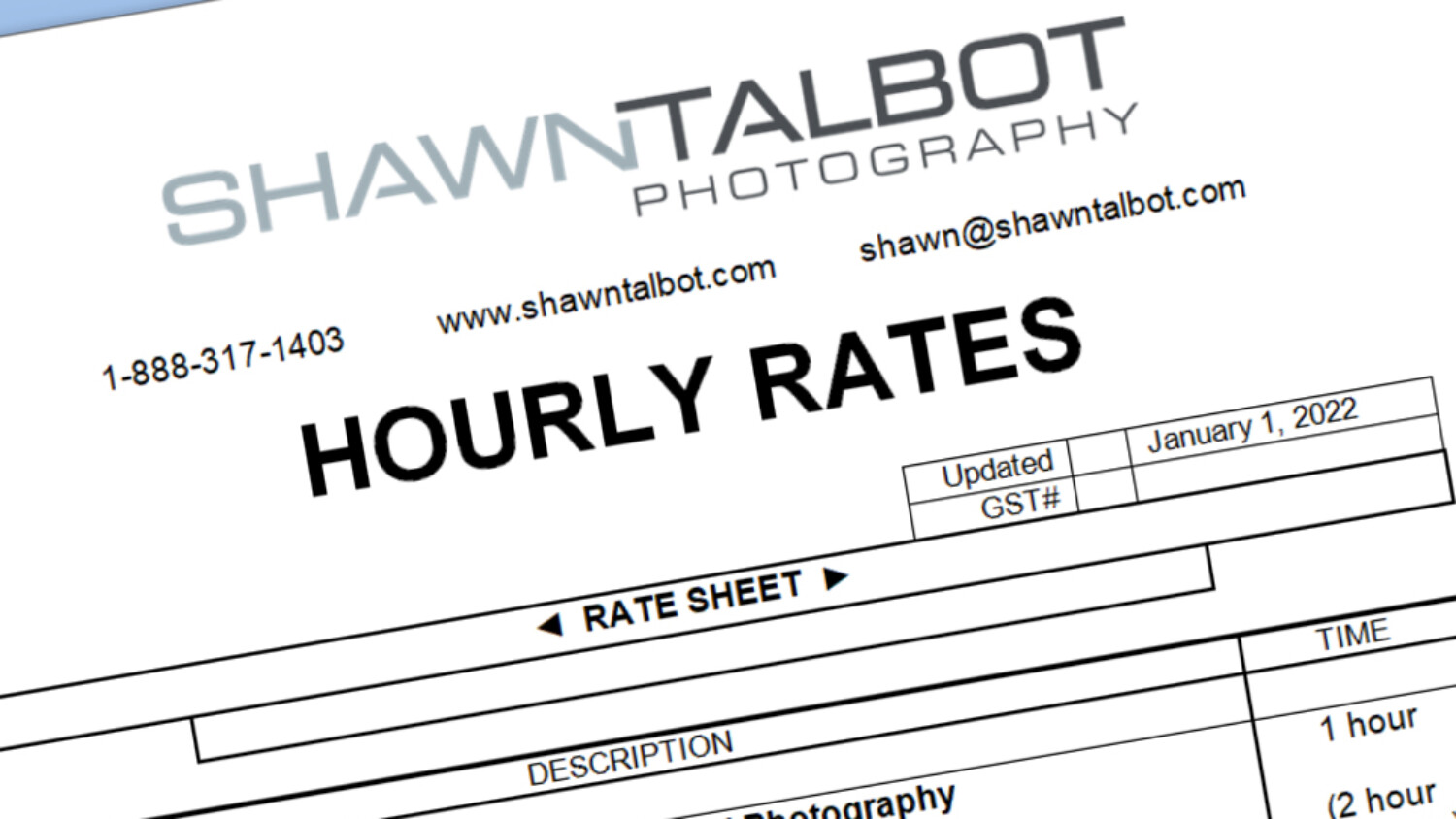Why I Abandoned a Day Rate and Charge Hourly
We all know that awful, sinking feeling at the end of a long day when the client says, “Oh hey, can we just grab one more quick shot?” When I had a day rate, those feelings of defeat, exhaustion, and frustration were real. Since I switched to billing hourly, those conversations go something more like this:
Client: “Oh hey, can we just grab one more quick shot?”
Me: “Absolutely, I would love to!”
It’s easy to imagine why a client paying a day rate would want that day to be as long and as fruitful as possible. Of course, you can set a limit to the number of hours a day constitutes, but never wanting to say “no” to a client and agreeing to that “one last shot” is often of no financial benefit. It was for this reason that I decided to switch to an hourly model of billing. Making this simple change has rewarded me with simpler conversations about billing, happier clients, increased revenue, an improved working life, and better images.
Day [dey] noun: the interval of light between two successive nights; the time between sunrise and sunset
When I used to bill by the day or half day, clients would often ask, “Well, how long is a day?” That was always a tricky conversation because either they thought they weren’t getting a lot of value for 8 hours or they were not really keen to be on set for 12 hours. As well, whether the client said it or not, I knew they were wondering if they were paying my lighting assistant and I to sit there and eat our lunch. With hourly billing, it never comes up. The work stops and we go on a break. Nobody cares because nobody is paying for it.
If a day is sunrise to sunset, where I live in Canada, a day in December is about 8 hours. Fantastic! A day in June is about 16 hours. No thanks. Sure, I can set a limit on the number of hours in a day but what happens when we only have access to the site for one day and the client wants both sunrise and sunset? Of course there is an answer to this problem but it just adds complexity to your client communications and I like to keep things as simple as possible.
But do you really want that photo?
Have you ever noticed that that one more quick shot requested at the end of the day is almost always a throwaway image? It’s either a repeat of something else captured earlier or it’s essentially pointless and you know that it will not be used. Subsequently, this also means that the image is likely not going to end up in your portfolio – just one more reason to not want to capture an image that you aren’t being paid for. Sure, I’ll make a little extra on the retouching, if they select it to be retouched, but my time on set is not being paid for. If a client knows that asking for one more shot equals 30 minutes of billable time, they will think twice about how much they really want that image captured. It no longer becomes a situation where clients are trying to milk every ounce of time and generosity that they can out of a photographer. In Where Art Meets Architecture, when referring to doing jobs for less than your normal rate, Mike Kelley commented, “It is hard to put your heart into something when you know that your time is not being valued.” I find this to be incredibly true.
Money isn’t the only form of currency
The last point I will make is that sometimes clients only need one or two shots. For me, submitting quotes with a half day minimum meant lost jobs and lost opportunities. I now bill a minimum callout of two hours. That can turn into a $1500 job (including cost sharing and retouching) that I would have lost out on if I had required a half or full day minimum. Many photographers can’t be bothered with the process of quoting, organizing, preparing, shooting, retouching and invoicing a two hour job and I completely understand and respect that. But for me personally, I have found that many assignments to capture one or two “hero” shots have resulted in some of the best images in my portfolio.
Have you made the switch from a day rate to hourly? Or the switch from hourly to a day rate? How has it impacted your business? I would love to hear about your experience.
